Emily Larkin's Blog - Posts Tagged "emily-larkin"
Ivy's Choice
I started writing the Fey Quartet while I was working at Glade House in Fiordland National Park, a stunningly beautiful and remote part of New Zealand. When I needed a name for the forest where my characters’ adventures take place, I looked at the rain forest surrounding Glade House . . . and Glade Forest was born. Two very different forests, but both magical in their own ways.
[image error]

Of the four novellas in the Fey Quartet, Ivy’s Choice was the most challenging to write—because of the hero’s actions in one scene. (Poor Hugh spends much of this book trapped in the shape of an animal, and when he is human he sometimes struggles to control his behavior.)
When I sent the novella to my editor, I said to her, “Does this scene make my hero irredeemable?” and she said, “Uh, yeah.” So we brainstormed a way for Hugh and Ivy to react that was true to their characters and the situation, but that allowed Hugh to remain heroic.
Rewriting ensued, and I’m very happy with the end result. Of course, the most important opinion isn’t mine, but yours.
Is Hugh heroic . . . or not? If you read the novella, drop me a note to let me know what you think!
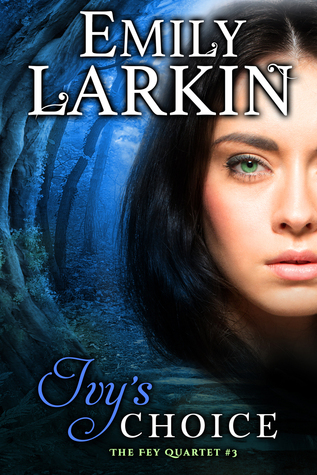
Introducing Marcus and Charlotte
Yes, you read that correctly: Marcus thinks that Charlotte is a man. In fact, he’s just hired her to be his new secretary.
Over the next few weeks, I’ll share some of Marcus and Charlotte’s opinions on various subjects, as expressed in Unmasking Miss Appleby.
MARRIAGE
Let’s start with Marcus...
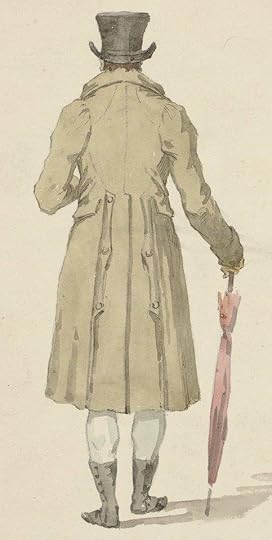
Marcus is an earl and a widower. His views on marriage are the result of painful experience:
“Take my advice, Albin. Never marry a beautiful woman.”
“No, sir,” Charlotte said, automatically, and then her brain caught up with her ears. What?
Cosgrove must have seen the confusion on her face. “My wife married me for my earldom and my money. Beauty, in exchange for wealth.” His mouth twisted into an ironic, humorless smile. “I was fool enough to believe it was a love match.”
“Oh.” How should she respond to an admission like that? “I’m sorry, sir.”
Cosgrove shrugged, dismissing her sympathy, and stretched out his legs towards the fire, still cradling the brandy glass in his hands. “I learned a valuable lesson. Believe me, I shan’t make the same mistake again.”
Poor Marcus. He's learned his lesson when it comes to wives. The next time he marries he wants a marriage of convenience, or, as he describes it to himself:
A cordial relationship with a woman for whom he felt a degree of respect and affection. A sensible woman. A woman who wouldn’t indulge in histrionics or affaires. A woman with whom he’d have careful, amicable sex.
That was what he wanted—what he knew he wanted—and yet part of him wished for more.
As I said before, poor Marcus. But enough of him! Let's move on to Charlotte.
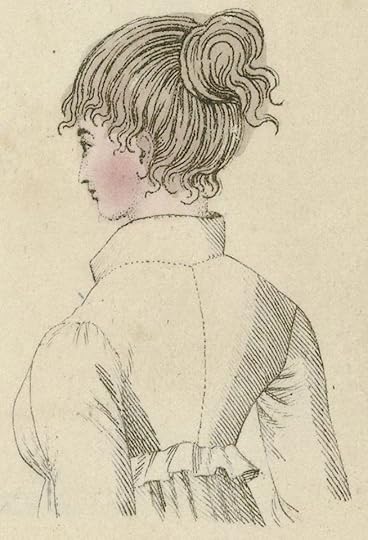
Charlotte is an orphan and a spinster. Her views on marriage are much simpler than Marcus’s. In fact, they can be summed up in one sentence:
“I shall never marry.”
It doesn't look very hopeful for them, does it?
[Images courtesy of the Rijksmuseum's collection of public domain images.]
Larkspur's Quest
Here’s a portrait of the prince. He’s dead, but he’s also not dead, and he’s about to cause Cadoc and Larkspur a whole lot of trouble . . .
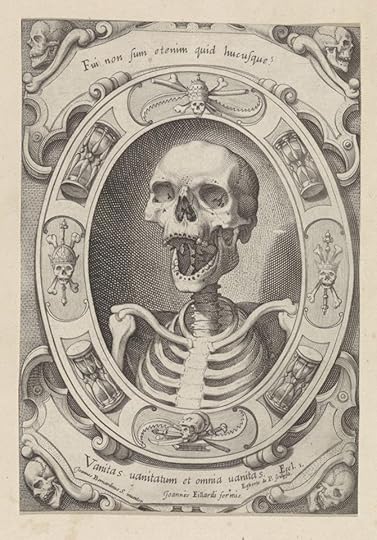
I fall in love with every hero I write, but some more than others, and Cadoc is definitely one of the love-more heroes. Poor guy, he’s torn between his loyalty to Dappleward and his love for Larkspur, and he is truly anguished by the events that unfold. (Which is not to say that all my favorite heroes are anguished; my second favorite hero in the quartet is Tam, and he pretty much laughs his way through life.)
But if I adore Cadoc because he’s so honorable, I must confess that I enjoy the dead Faerie prince because he’s not. If there's one lesson my characters learn in this tale, it’s to never trust a Faerie, whether he’s dead or alive.
If you read the novella, please do drop me a line to let me know what you think of Larkspur and Cadoc—and the Faerie prince!
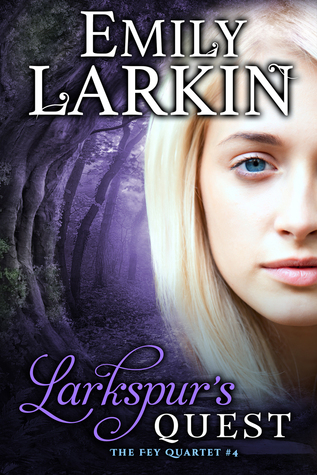
[The portrait of the dead Faerie prince is courtesy of the Rijksmuseum's collection of public domain images.]
Introducing Marcus and Charlotte, Part 2
Boxing is one of these areas.
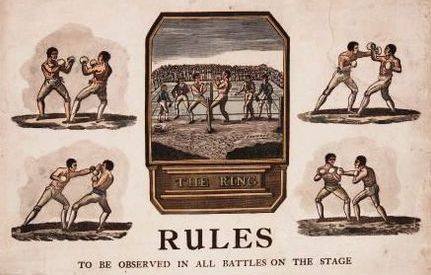
Lord Cosgrove is an outstanding boxer who regularly spars with Gentleman Jack. He enjoys a good fight. When he interviews Mr. Albin (Charlotte) for the position as his secretary, one of the questions he asks is:
“Can you fight?”
Albin blinked. “Fight?” He glanced down at his hands. “I guess so, sir. I’ve never tried. Why?”
Poor, innocent Charlotte! She’s about to encounter footpads—and while Cosgrove finds the experience exhilarating, Charlotte . . . doesn’t.
She looked around for her hat. It lay against the wall. She walked over to it on unsteady legs, picked it up, placed it on her head.
She tried to laugh as she turned back to Cosgrove. The sound came out with a slight wobble in it. “I’d heard London streets were dangerous.”
“Never doubt it,” Cosgrove said. “Come along, lad. Let’s get home. I need a drink.”
And with that drink comes a critique of Charlotte’s fighting skills . . .
“Brandy?”
Charlotte hesitated. Perhaps it would stop her hands shaking? Uncle Neville always said brandy cured all ailments. “Thank you, sir.”
Cosgrove poured two glasses and held one out to her.
Charlotte didn’t sip cautiously; she took a reckless mouthful. The brandy scorched her tongue, stung her nose, filled her mouth with heat. She swallowed. The heat burned down her throat into her belly.
“If you will forgive me for saying so, Albin . . . you would benefit from some instruction in the science of boxing.”
“There’s a science to it, sir?” She drank another mouthful. The heat expanded through her body.
Cosgrove paused, his glass halfway to his mouth. For a moment he stared at her, his eyebrows raised in disbelief, and then he said, “Of course there’s a science to it.”
Which leads to Charlotte’s first boxing lesson . . .
[Image: Detail from Jack Broughton’s Rules, public domain, courtesy of Wikipedia]
Introducing Marcus and Charlotte, Part 3
Charlotte is an educated woman. She can read French, Latin and Greek, but she doesn’t know how to tie a neckcloth, ride astride, or throw a punch. These are all skills she is about to learn . . .
NECKCLOTHS
One of the very first things Lord Cosgrove (Marcus) notices about Mr. Albin is his neckcloth.
Albin’s neckcloth was atrociously tied. It added to his appearance of youthfulness.
Marcus isn’t a dandy, but he does like to dress well. His secretary’s neckcloths are a great trial to him.
“I am perfectly capable of dressing myself.” His gaze fell on Albin’s neckcloth, lopsided and somewhat wrinkled. “Unlike some of us.”
Albin raised a hand and fumbled with his neckcloth.
“Don’t. You’re making it worse.”
So much of a trial, in fact, that Marcus finally takes matters into his own hands.
Cosgrove’s expression grew pained. “Albin, I must insist—I really must insist—that you learn to tie a respectable neckcloth.”
Charlotte touched the knot of muslin at her throat. “What’s wrong with it, sir?”
“An organ-grinder’s monkey could tie a neater neckcloth.” Cosgrove pushed away from the windowsill. “Upstairs with you. It’s time you had a lesson.”
Personally, I think I'd be as bad at tying neckcloths as Charlotte is. They look fearfully intricate!

[Public domain image courtesy of Wikipedia.]
Unmasking Miss Appleby
Of the twenty-one books I’ve written (three of which shall never ever be published) there are two that are my deepest books of the heart. One is my first published book, Thief With No Shadow, and the other is Unmasking Miss Appleby.
I enjoy writing fantasy novels, but I love writing historical romances, and in particular I love the regency period—as in LOVE this period. Which is purely to do with Georgette Heyer, whose books I read over and over and over again.
Unmasking Miss Appleby is the book I’d been wanting to write for years. It takes everything that I love about regency romances, but adds a little bit of what I love about fantasy. It’s Georgette Heyer with a dash of magic, Jane Austen meets Maleficent.
UNMASKING MISS APPLEBY
On her 25th birthday, Charlotte Appleby receives a most unusual gift from the Faerie godmother she never knew she had: the ability to change shape.
Penniless and orphaned, she sets off for London to make her fortune as a man. But a position as secretary to Lord Cosgrove proves unexpectedly challenging. Someone is trying to destroy Cosgrove and his life is increasingly in jeopardy.
As Charlotte plunges into London’s backstreets and brothels at Cosgrove’s side, hunting his persecutor, she finds herself fighting for her life—and falling in love…
Today Unmasking Miss Appleby is released into the world. I hope readers will enjoy it as much as I do.
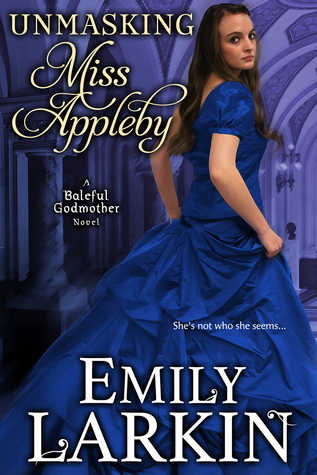
The Fey Quartet
I started writing Maythorn’s Wish while I was working on the Milford Track, and Glade Forest is and isn’t the forest around Glade House, where I was based. The Milford Track is pretty magical, but when you go exploring off-track you’re more likely to run into these guys, not Faeries.
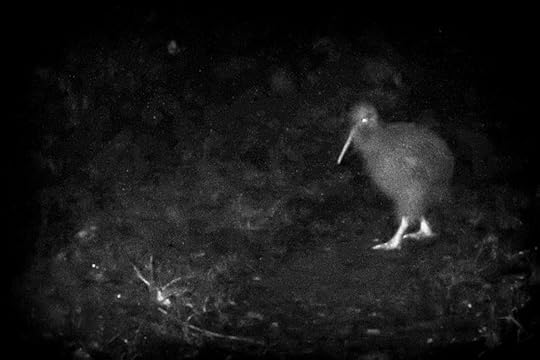
Yes, that is an actual photo of an actual kiwi that I bumped into one night! It was a pretty exciting moment for me—and a little unnerving for the kiwi.
Hazel’s Promise was written after I’d finished working on the track, but before I went back to civilization proper. I was on Stewart Island, which is very remote, but does have electricity, a few cars, cellphone coverage, and a tiny library that’s open one hour a day, four times a week.
Hazel’s Promise is the only novella in the quartet that takes place outside the fairytale safety of Dapple Vale. Hazel encounters the reality of Medieval England—and it’s dirty, dangerous, and smelly! This drawing isn’t Mottlethorpe, but it easily could be.
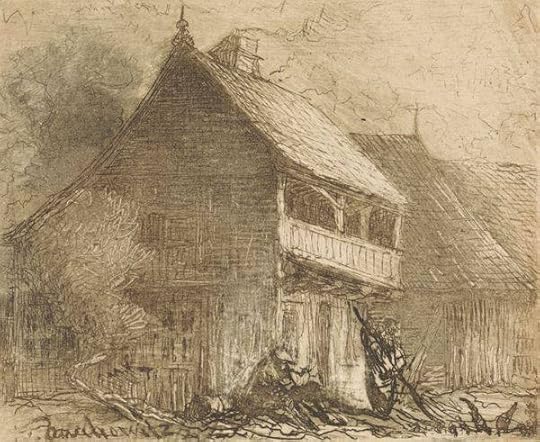
I guess that doesn’t really tell you much about the novellas though, does it? Let’s see...
Maythorn’s Wish is an emotional story about courage and new beginnings; Hazel’s Promise is a light-hearted tale about disguises and seeing people for who they really are. Both novellas have strong heroines, and they both have heroes I adore—Ren Blacksmith because he’s so kind and wise, and Tam Dappleward because he laughs his way through life.
What else can I say about them?
Someone told me that Maythorn's Wish made her tearful at the end. That's good, right?
And Hazel's Promise makes me laugh in several places.
So there you have it: a little bit about Maythorn’s Wish and Hazel’s Promise.
Happy reading!
Emily
[Kiwi image © me! Mottlethorpe image courtesy of the Rijksmuseum public domain collection.]
Introducing Merry and Sir Barnaby Part 2
Anne Merryweather (Merry), the heroine, is the daughter of a noblewoman and a dancing master. We can pretend this image is her father's dancing academy.

Merry's father taught her how to read people's body language--a skill that she uses to read the hero, Sir Barnaby Ware, when they first meet. Here, she's trying to determine his character:
They walked side by side along the riding officer’s path. Sir Barnaby made a good pretense of strolling—he commented on the wildflowers, the limestone cliffs, the seabirds—but it was obvious that most of his attention was turned inward.
If she was to gain any understanding of him, she needed to see the real Sir Barnaby, not this polite automaton walking alongside her.
“I wonder if you ever met my father, Sir Barnaby?” Merry said, watching his face closely. “He was a dancing master. Alexander Merryweather.”
She saw the blink of surprise, the slight blankness of his face as he processed the words, the dawning realization in his raised eyebrows. “You’re Alexander Merryweather’s daughter?”
“Yes.”
That had broken through his preoccupation. Sir Barnaby halted, and stared at her in astonishment. Merry stared back intently. The next few seconds would tell her about his sense of self-importance.
The change from politeness to polite condescension was sometimes overt, sometimes almost imperceptible, but Sir Barnaby displayed none of the signs. He didn’t draw away from her. His chin didn’t lift; it lowered. And it wasn’t haughtiness in his eyes, but interest.
Not a snob.
“I never met him, but I heard of him, of course. He was legendary.” And then Sir Barnaby’s manner altered again. There was genuine sympathy in his eyes, in his voice. “I heard he died last year. I’m very sorry, Miss Merryweather.”
Merry nodded acknowledgment of his sympathy. “Thank you.”
She saw an unspoken question form on Sir Barnaby’s face, and then his expression became politely disinterested. He resumed strolling.
Being astute, Merry guesses his question, and in the course of their subsequent conversation Sir Barnaby gives away a lot more information about himself than he realizes...
[Image courtesy of the British Library (Public Domain).]
Introducing Merry and Sir Barnaby Part 3
The hero (Sir Barnaby Ware) is a man who made a really big mistake several years ago, and he's been regretting that mistake ever since.
This snippet is from the first chapter. Merry and Sir Barnaby have just met. They're in a curricle, with the groom (Catton) sitting behind. To Barnaby's embarrassment it turns out that Miss Merryweather has noticed how he dances...
“I saw you once at Vauxhall,” Miss Merryweather said. “Several years ago.”
Barnaby wrenched his thoughts back to his companion. “Er . . . you did?”
“At one of the ridottos.”
Barnaby looked more closely at her—the heart-shaped face, the dimples, the full, sweet mouth. Did she expect him to recognize her? “I’m afraid I don’t recall meeting you,” he said apologetically.
“Oh, we weren’t introduced. I was there with my fiancé, and you were with Lord Cosgrove and his fiancée.”
“Oh.” His face stiffened. The familiar emotions surged through him: guilt, shame, remorse.
Barnaby looked away, and gripped the reins tightly. God, to be able to go back to the person he’d been then. To be able to relive his life and not make the same dreadful mistake.
“I noticed you most particularly. You were the best dancer there.”
It took a few seconds for the words to penetrate the fog of shame and regret. When they did, Barnaby blinked. “Me?”
“Marcus dances fairly well,” Miss Merryweather said. “He’s a natural athlete, but he’s a pugilist. He’s trained his body for strength, not grace. You, I’d hazard a guess, are a better fencer and horseman than Marcus.”
“Not by much,” Barnaby said, staring at her. What an unusual female.
“It takes a number of qualities to make a truly excellent dancer. Not merely precision and grace and stamina, but a musical ear as well, and of course one must enjoy dancing. You have all of those qualities, Sir Barnaby. You’re one of the best dancers I’ve ever seen.”
Barnaby felt himself blush. “Thank you.” He refrained from glancing back at Catton. The groom was doubtless smirking.
And to finish off this post, here's an image of a Regency gentleman dancing -- and I hasten to add that he bears no resemblance to Sir Barnaby beyond the fact that he's male and he clearly enjoys dancing!

[Image courtesy of the Rijksmuseum collection of public domain images.]
Introducing Merry and Sir Barnaby Part 1
The hero: Sir Barnaby Ware, is a man who made a dreadful mistake two and a half years ago. As in really dreadful. And because of that mistake, his closest friendship was destroyed.

The heroine: Anne Merryweather (Merry), is the daughter of a noblewoman and a dancing master. Her father taught her to observe people's body language.
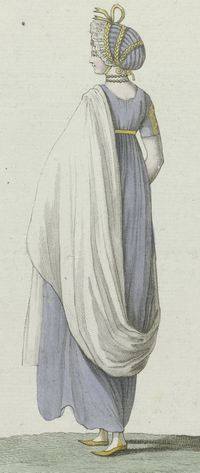
In this snippet, Merry and her cousin (Charlotte) are watching Barnaby and his former best friend (Marcus) talk for the first time since Sir Barnaby made his dreadful mistake. (And yes, Charlotte and Marcus are the hero and heroine of Unmasking Miss Appleby.)
Outside, on the lawn, movement caught her eye. Marcus and Sir Barnaby came into view. Merry had seen hundreds of men walk into her father’s dancing studio, but none had looked as uncomfortable as Sir Barnaby did now. He held himself stiffly, tensely, as if trying not to hunch in on himself.
Marcus was tense, too, but his was an eager, hopeful tension. He was half-turned to Sir Barnaby, talking, gesturing towards the abbey.
Sir Barnaby listened with his head slightly lowered, slightly averted.
He can’t bring himself to meet Marcus’s eyes.
“They’re talking,” Charlotte said, a note of hope in her voice.
“Hmm,” Merry said. The difference between the man she’d seen dance at Vauxhall four years ago and the man now crossing the lawn was stark.
Her noncommittal response brought Charlotte’s head around. “What do you see?”
“I think . . . Sir Barnaby no longer believes that reconciliation is possible.”
So there you have it: a glimpse of Barnaby and Merry!
[Hero and heroine images courtesy of the Rijksmuseum collection of Public Domain images.]



